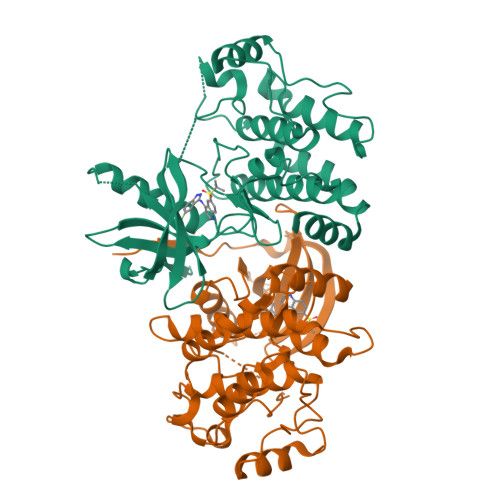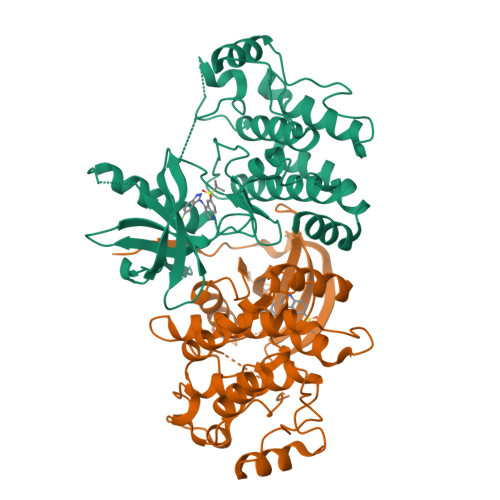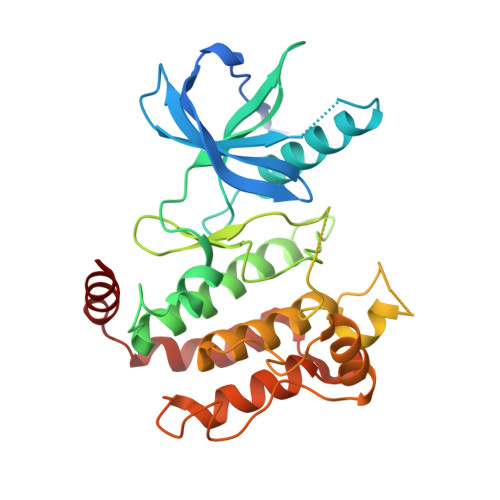The Identification and Pharmacological Characterization of 6-(tert-Butylsulfonyl)-N-(5-fluoro-1H-indazol-3-yl)quinolin-4-amine (GSK583), a Highly Potent and Selective Inhibitor of RIP2 Kinase.
Haile, P.A., Votta, B.J., Marquis, R.W., Bury, M.J., Mehlmann, J.F., Singhaus, R., Charnley, A.K., Lakdawala, A.S., Convery, M.A., Lipshutz, D.B., Desai, B.M., Swift, B., Capriotti, C.A., Berger, S.B., Mahajan, M.K., Reilly, M.A., Rivera, E.J., Sun, H.H., Nagilla, R., Beal, A.M., Finger, J.N., Cook, M.N., King, B.W., Ouellette, M.T., Totoritis, R.D., Pierdomenico, M., Negroni, A., Stronati, L., Cucchiara, S., Ziokowski, B., Vossenkamper, A., MacDonald, T.T., Gough, P.J., Bertin, J., Casillas, L.N.(2016) J Med Chem 59: 4867-4880
- PubMed: 27109867
- DOI: https://doi.org/10.1021/acs.jmedchem.6b00211
- Primary Citation of Related Structures:
5J79, 5J7B - PubMed Abstract:
RIP2 kinase is a central component of the innate immune system and enables downstream signaling following activation of the pattern recognition receptors NOD1 and NOD2, leading to the production of inflammatory cytokines. Recently, several inhibitors of RIP2 kinase have been disclosed that have contributed to the fundamental understanding of the role of RIP2 in this pathway. However, because they lack either broad kinase selectivity or strong affinity for RIP2, these tools have only limited utility to assess the role of RIP2 in complex environments. We present, herein, the discovery and pharmacological characterization of GSK583, a next-generation RIP2 inhibitor possessing exquisite selectivity and potency. Having demonstrated the pharmacological precision of this tool compound, we report its use in elucidating the role of RIP2 kinase in a variety of in vitro, in vivo, and ex vivo experiments, further clarifying our understanding of the role of RIP2 in NOD1 and NOD2 mediated disease pathogenesis.
Organizational Affiliation:
Platform Technology and Science, GlaxoSmithKline, Medicines Research Centre , Stevenage, SG1 2NY, UK.



















